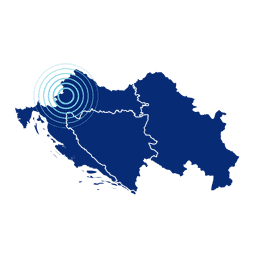
Overview
People typically cross Croatia to reach Slovenia, then continuing on to Austria, Germany, France and other countries in central and northern Europe. In 2022, the number of migrants trying to enter Croatia has been steadily decreasing as migrants look for alternative routes to enter EU countries. With such brutal government-led treatment of people on the move in Croatia, the need for grassroots groups is clear. Lack of official support and failure to uphold basic human rights means there are many ways grassroots can support people on the move. NFI, medical assistance, legal support, and much more are all vital services currently provided by non-profit groups in Croatia.
Government Response
The EU has allocated €122 million to fortify border control in Croatia over the past five years, making it one of the most difficult transit points within the EU. However, The border fence between Slovenia and Croatia has been announced to be dismantled by the end of 2022, this could redirect migration onto this route again. We will need to see how the situation is evolving through the next months. Croatia has been heavily condemned for its mistreatment of migrants at its borders for years. They are accused of illegal pushbacks, repeatedly denying the right to claim asylum, including for families and minors. Countless accounts of abuse include people being bound, brutally beaten and tortured. Human Rights Watch recently remarked that “Croatia’s unlawful and violent summary returns of asylum seekers and migrants should disqualify it from joining the Schengen Area”.